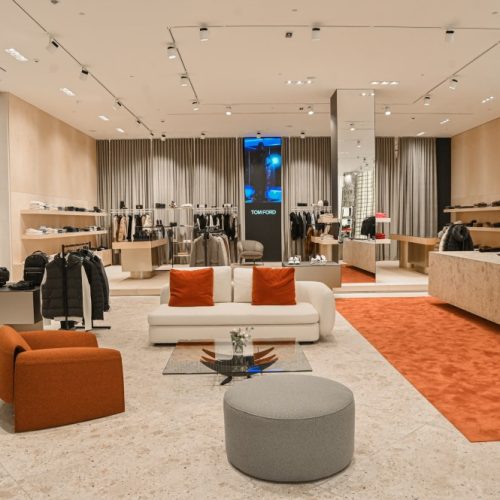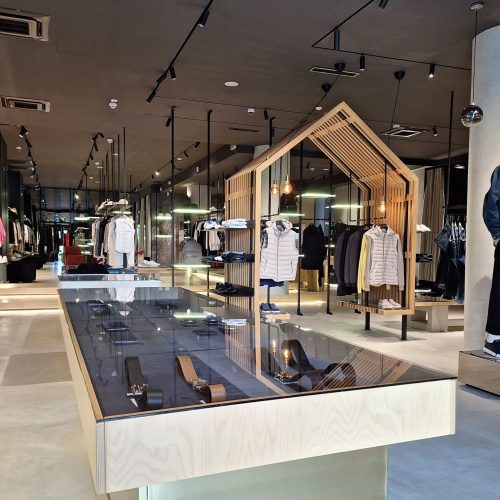Serbian Queen Natalija had a deep interest in fashion. Although her penchant for luxury was criticized by many in Serbia, including King Milan, she was considered a fashion icon of her time, having a significant following among women. After her exile from Serbia in 1891, a dress she left behind was reportedly preserved as a cult object on the premises of the Women’s Society of Belgrade.
The most well-known and exemplary visual depiction of Queen Natalija is the portrait from 1882 painted by Vlaho Bukovac, which is displayed in the National Museum of Serbia. In this portrait, the queen is dressed in a sumptuous bustle dress, in line with European fashion trends of the 1870s and 1880s. Evolving from crinolines that spread the lower part of the dress around the body, the bustle was a support structure worn at the back to expand only the rear part of the skirt. The fashion of this period was characterized by decorative elements such as ribbons, flounces, elastic fabrics, and pleats, while the fabrics used for the bustle included cushions filled with horsehair, stiffly starched cloth, and frames of whalebone, bamboo, and rattan.
In his memoirs, Vlaho Bukovac recollected a conversation with Queen Natalija regarding her intention to be represented in a bustle gown. On that occasion, she told him she disliked her ceremonial attire (national costume) because it included too much jewelry and diverse accessories. By preferring fashionable dress over national costume and emphasizing her fashion-conscious image, Queen Natalija was directly involved in remodeling the public representation of the ruler’s wife, which significantly differed from the previous norms. Historically, the central point of the official representation of the wives of Serbian rulers, Princesses Ljubica, Persida, and Julija, was a dress with national traits.
Of course, as the ruler’s wife, Queen Natalia also used the national costume to constitute her national image. Portraits of the Queen in national costume have been preserved, including a watercolor by Carl Goebel from 1881, painted while she was still a princess and exhibited in the Residence of Princess Ljubica. Like Princess Julia in her official portrait from around 1865, Princess Natalia at this time combined elements of the national costume, such as the jacket – libade and cap – tepeluk, with modern, European clothing – the bustle dress. An important part of the national costume at the public representations of the Serbian rulers’ wives, especially in the case of Princess Persida and Queen Natalija, was lavish jewelry, including a large brooch in the form of a flower bouquet – grana, worn as headgear.
Another portrait of Queen Natalija, a work by Uroš Predić from 1890, attracted public attention when it appeared at a 2008 auction at Bonhams in London. In the portrait, which was painted in the queen’s private salon – boudoir, besides luxurious and fashionable clothes, various carefully selected interior elements played a crucial role in constructing the image, like Oriental carpets and Pirot kilims, books, domestic and foreign newspapers, a photograph of Crown Prince Alexander, an icon of the Virgin Mary, a palm tree, and a samovar. This may be the very portrait, for which Queen Natalija wrote in 1904 it should have been sent to the writer Pierre Loti in Istanbul.
Following her divorce from King Milan and departure from Serbia in 1891, Queen Natalija lived in Biarritz, at Villa Sacchino. There she organized social gatherings and hosted prominent persons from the political, social, and artistic circles. She wrote to geologist and politician Jovan Žujović in 1897 and 1898 that she was in the spotlight of fashionable events, leading a high-society life. In 1897, the British fashion magazine The Queen, which regularly reported on women from high society, announced that Queen Nathalie of Servia had purchased numerous chef d’oeuvres in the Paris branch of the Redfern fashion house. This renowned fashion house later supplied clothing to the Yugoslav queen Maria.
Interestingly, the only high-fashion item preserved in Serbian museum collections was created in the Paris branch of Redfern. It is an evening dress worn by Elena Ristić, granddaughter of politician and historian Jovan Ristić, at her engagement party in Paris in 1909. In the same year, the dress, now a part of the Belgrade Museum of Applied Art’s collection, was featured in the prestigious French fashion magazine Les Modes, both in the July and November issues.
Draginja Maskareli
Museum advisor – Art and Fashion Historian

Vlaho Bukovac, Queen Natalija, 1882; photo: Wikimedia Commons / CC BY-SA 4.0 DEED / National Museum of Serbia

Queen Natalija; photo: Wikimedia Commons / CC BY-SA 4.0 DEED / Museum of the Rudnik and Takovo Region

Princess Julija, circa 1865, National Museum of Serbia; photo: Wikimedia Commons / Public Domain

Uroš Predić, Queen Natalija, 1890; photo: Wikimedia Commons / Public Domain

Evening Gown, Redfern fashion house, Les Modes magazine, Paris, July 1909; photo: Wikimedia Commons / Public Domain / Gallica Digital Library



